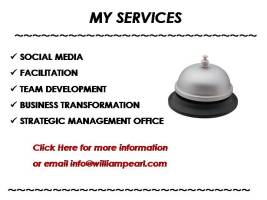
Change, The One Constant.
It is puzzling how many times the importance of change management is discussed in the business environment and yet so few actually incorporate change management plans in their business initiatives. How is it that our business leaders will often address their management team with the importance of becoming more adept at managing change but do so little to nurture this organization capability? In fact, I venture to say that change management and transformation have become THE BUZZ words of 2010 and given the state of affairs, it will continue to be so for years to come. A morning read of a newspaper article highlighted the high pace of change and the need to manage it – or suffer the consequences of being stuck in the past. Is there anything unusual about this article? The answer is most likely “No”. The only quandary is that this was written in 1929 when you could get a newspaper for three cents and the speed on the highway was not related to information (I am a collector). In 1929, the change was related to “mechanical automation”. The only difference today is the nature of the change. Change is a constant. So why is it that after so many decades we continue to recognize the high speed of change, however our change management approach continues to be a mystery? Too many leaders, change management is an amorphous concept and as a result they have a tendency to shy away from it.
Organization Change Management Defined
Change management means different things to different people and so in order to manage it, we  need to define it. I would like to start with “What it is not”. It is not an event; it is not Human Resources; it is not a consultant; it is not project change control; it is not one person’s job; and it is not an organization structure. I would now like to offer this definition: Organization change management is a cross-functional, integrated process with tools and techniques to enable people to move from their current state, and transition to the preferred future state of an organization’s vision. When successfully exercised repetitively, an organization will have also built a strategic capability to manage and expedite business change, so that they can readily take advantage of competitive opportunities. Such an organization has invested in an integrated change competency, or resiliency, that embraces change as a business norm. Change management is related to the people-side of an initiative and it means managing the “soft-side” of the change. Change management is hard work and often poorly addressed. When not addressed, it is also unfortunately a lost opportunity that would otherwise build change elasticity in an organization which could be a business advantage for the very reasons described above.
need to define it. I would like to start with “What it is not”. It is not an event; it is not Human Resources; it is not a consultant; it is not project change control; it is not one person’s job; and it is not an organization structure. I would now like to offer this definition: Organization change management is a cross-functional, integrated process with tools and techniques to enable people to move from their current state, and transition to the preferred future state of an organization’s vision. When successfully exercised repetitively, an organization will have also built a strategic capability to manage and expedite business change, so that they can readily take advantage of competitive opportunities. Such an organization has invested in an integrated change competency, or resiliency, that embraces change as a business norm. Change management is related to the people-side of an initiative and it means managing the “soft-side” of the change. Change management is hard work and often poorly addressed. When not addressed, it is also unfortunately a lost opportunity that would otherwise build change elasticity in an organization which could be a business advantage for the very reasons described above.
Shirley
Photo by wallyg
{EAV_BLOG_VER:0b25c5e00bdd6171}


 July 25, 2011
July 25, 2011 




No comments yet... Be the first to leave a reply!